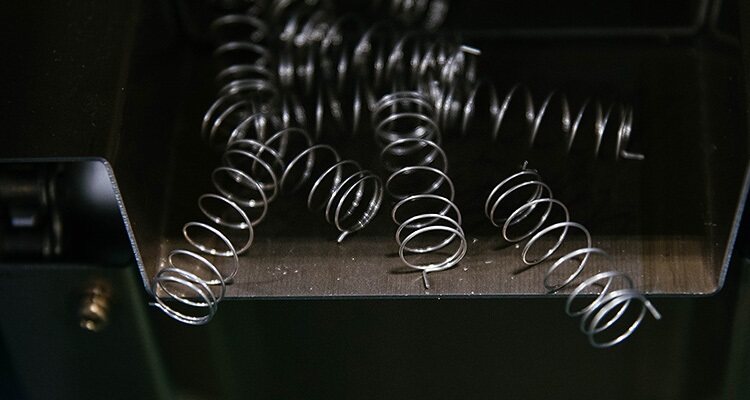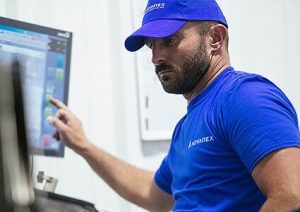
Why commitment to customer service has driven Advanex Americas’ latest string of investments
As the manufacturing industry strives for precision and excellence, Advanex Americas (Advanex) is continuing to exceed expectations with its range of custom springs and wire form production. The business was incorporated in Tokyo, Japan in 1946, 16 years after Inokichi Kato, the company’s first president, founded a spring factory in the region.
Its US operation, which was the first outside of Japan, began in 1971 in southern California, but relocated to Nashville, Tennessee in 2022. Today, Advanex operates manufacturing facilities throughout Asia, North America, and Europe, and is a publicly traded company on the Tokyo Stock Exchange.
“In terms of production, our US factory specializes in spring and wire form production but is supported by two sites in Mexico that also feature stamping and insert molding operations,” begins Chad Wright, Vice President of Sales at Advanex. “Our primary market is medical, for which we produce springs for medical drug delivery devices and oncology diagnostic devices.
 “We also produce springs and wire forms for the automotive industry, which are used for all sorts of applications from door latches and fuel pumps to braking systems and ignition coils. Our third segment is what we call office automation, comprising our work on commercial printers and toner cartridges, for companies across the globe. Believe it or not, we still make springs for disposable cameras here in the US.
“We also produce springs and wire forms for the automotive industry, which are used for all sorts of applications from door latches and fuel pumps to braking systems and ignition coils. Our third segment is what we call office automation, comprising our work on commercial printers and toner cartridges, for companies across the globe. Believe it or not, we still make springs for disposable cameras here in the US.
“Although we serve those three markets, around 70-to-75 percent of our products are for medical devices,” Chad tells us. “Our medical customers were the motivation behind our relocation to Nashville too, as the move has not only brought us closer to such customers but has also enabled us to dedicate a site to the manufacturing of medical devices.”
Elaborating on the decision to move to Nashville, Chad continues: “Our new site is focused on the medical sector, whereas our California factory had a higher mix towards automotive production. We moved with the intent to create a dedicated medical production site, so we’ve been able to tailor the new factory specifically towards our medical manufacturing processes, as opposed to retrofitting our old factory. It also enabled us to shed some legacy business that didn’t fit our strategic direction moving forwards, enhancing our focus on medical springs and forms.
“As we produce such high volumes of product for the medical industry, we’ve moved geographically closer to our customers to significantly shorten our transportation routes. When we started medical production, we were shipping one delivery of medical devices across the country each week but are now shipping around eight full trucks per week.
Increasing production capabilities
“This means we’ve dramatically reduced our transit time and been able to boost our customer service. To give you an idea, the transit time from California was around one week, but from our new site, we’ve managed to reduce it to within one day.”
However, investment into the new site is not slowing down any time soon. “The 50,000-square-foot site sits on a 21-acre plot, so we’ve got plenty of room for additional expansion and we’re planning a major extension in 2024,” Chad reveals. “In the meantime, we’re investing in additional production equipment on a regular basis and exploring the possibilities of automation.
“We pride ourselves on creating and maintaining strong working relationships with customers, so our current customers expect us to continue meeting increased production requirements as their businesses continually expand. We spend a lot of time on our customers’ production floor with their technical personnel to better understand the role we can play in improving their overall efficiencies.
“We’ve developed global strategy teams for each sector to explore how we can best assist our customers as most of them have global customer bases. We set up manufacturing cells for each customer so we can produce the same parts consistently across the globe. This is also a form of risk aversion for us, as it means we can ramp up production at a different site if we run into any problems or delays, which also minimizes disruption for the customer.
Customer focused
“We’re currently working with several metrology suppliers to develop automated measurement techniques,” he adds. “We currently use lasers and camera systems on our equipment to provide us with real-time feedback on measurements. We’re aiming to automate our higher runs as much as possible, but we must first consider how we can automate quality checks to ensure our customers do not experience any defects.”
With 2024 on the horizon, conversation turns to not only the year ahead, but the company’s future growth strategy. “While we’re still seeing rapid growth within our existing customer base on our current programs, we’re always open to opportunities that are synergistic with our processes,” Chad proposes. “We look for new work in areas where our technical expertise provides a competitive advantage for customers looking to overcome issues or problems.
“As I mentioned, there’s plenty of scope for significant expansion within our current site, with our first major expansion planned for 2024,” Chad explains. “To prepare for increased capacity, we continue to explore the ways in which we can expand production capabilities without diluting our current successes.”